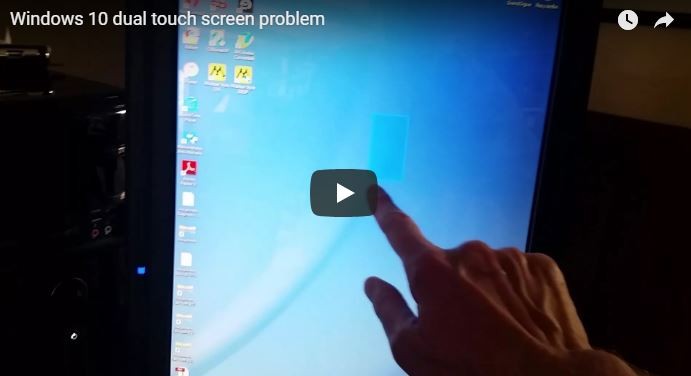Contractions on Monitor But Not Feeling Them: Understanding the Mystery
It is normal to have contractions and not feel them during pregnancy. Some women do not experience any contractions until delivery day, and this is completely normal.
Contractions can vary in intensity and sensation, so not feeling them does not necessarily mean there is a problem. It is important to trust the monitoring equipment and communicate any concerns with your healthcare provider. It is also possible to be dilated without feeling contractions, as the opening of the cervix can occur gradually without noticeable sensations.
Every woman’s experience with contractions is unique, and it is important to remember that there is no “right” or “wrong” way to feel them.

Credit: www.healthline.com
Contractions On Monitor: The Silent Mystery
One of the perplexing situations pregnant women may encounter during labor is when they see contractions on the monitor but do not feel them. This phenomenon, known as “silent contractions,” can often leave expectant mothers with questions and confusion. In this article, we will explore why some contractions are undetectable, the physiological reasons behind silent contractions, and debunk myths about painless contractions.
Why Some Contractions Are Undetectable
Contractions can be elusive, and it is not uncommon for them to show up on the monitor without being felt. There are several reasons why some contractions are undetectable:
- Contractions may be too mild or irregular to be noticeable.
- The position of the baby in the womb may affect the perception of contractions.
- Women with a high pain tolerance may not feel contractions that others would find uncomfortable.
- The use of pain relief medication, such as epidurals, can significantly reduce or eliminate the sensation of contractions.
The Physiological Reasons Behind Silent Contractions
Silent contractions have a physiological explanation. Sometimes, the muscles of the uterus contract without causing any discomfort. These contractions, often referred to as “irritability,” are normal and can be detected on the monitor. They serve a purpose in preparing the cervix for labor, even if they are not felt by the expectant mother.
Debunking Myths About Painless Contractions
There are misconceptions surrounding painless contractions, leading to unnecessary worry or confusion. Some common myths include:
- Myth 1: Painless contractions are not real contractions.
- Myth 2: Painless contractions indicate that labor is not progressing.
- Myth 3: Painless contractions cannot be strong or effective.
It is important to dispel these myths. Painless contractions, as detected on the monitor, can indeed be real contractions and contribute to the progress of labor. While they may not be felt by the expectant mother, they play a crucial role in the labor process.
The Nature Of Painless Contractions
It is possible to have contractions on a monitor but not feel them. These are often referred to as “irritability” or “Braxton Hicks” contractions and are not usually a cause for concern. Not feeling these contractions is completely normal and does not necessarily mean you are going into labor.
Understanding Braxton Hicks And Silent Labor
Braxton Hicks contractions are often referred to as “practice contractions” because they prepare your body for the upcoming labor and delivery process. These contractions are typically painless and sporadic, and they serve as a way for your body to test its readiness for real labor. Braxton Hicks contractions are usually felt as a tightening or squeezing sensation in the abdomen, but they don’t tend to increase in intensity or become more frequent over time. Silent labor, on the other hand, refers to the situation where contractions are showing up on the monitor, but the woman does not feel any pain or discomfort. This can be confusing and often raises questions about what these contractions mean and if they are a cause for concern. It’s important to understand that silent labor is not a term recognized in medical terminology. The absence of pain during contractions on the monitor does not necessarily mean that labor is starting or progressing.Recognizing Different Types Of Contractions
Contractions come in various forms, and it’s essential to recognize the differences to better understand what you are experiencing. Braxton Hicks contractions, as mentioned earlier, are common and usually painless. They can occur throughout pregnancy, but they are harmless and do not cause any changes in the cervix. On the other hand, true labor contractions are typically felt as intense and regular tightening sensations that become stronger and closer together over time. These contractions are usually accompanied by other signs of labor progress, such as the thinning and dilation of the cervix. True labor contractions are not usually confused with Braxton Hicks because of their distinct pattern and increasing intensity. Prodromal labor contractions, also known as false labor or “early labor,” can sometimes resemble true labor contractions. These contractions often start and stop irregularly and may be uncomfortable or even painful, but they do not lead to the active phase of labor. They can be frustrating and confusing for expectant mothers who might think their labor is starting when it’s not.Contractions On Monitor But Not Feeling Them: Clarifying Misconceptions
It is not uncommon for contractions to show up on the monitor without the woman feeling them. This phenomenon can happen due to various reasons, such as individual pain tolerance, positioning of the baby, or the sensitivity of the monitoring equipment. It is essential to remember that the absence of pain during these contractions does not necessarily indicate that labor is imminent or progressing. Sometimes, the contractions that are visible on the monitor may be too small or irregular to be felt by the expectant mother. These contractions could be classified as irritability or mild uterine activity. However, if these contractions are causing changes in the cervix, they may be considered significant and could indicate the onset of labor. If you are unsure or concerned about the contractions showing on the monitor but not feeling them, it is crucial to communicate with your healthcare provider. They can provide you with the necessary guidance and reassurance regarding your specific situation. In conclusion, experiencing contractions on the monitor without feeling them is not uncommon and does not necessarily mean labor is beginning. Understanding the different types of contractions, such as Braxton Hicks, true labor, and prodromal labor, can help differentiate between normal uterine activity and signs of active labor. Always consult with your healthcare provider to address any concerns or uncertainties about contractions during pregnancy.Monitoring And Misinterpretations
When it comes to monitoring contractions during labor and delivery, there can sometimes be a disconnect between what the equipment shows and what the woman actually feels. This can lead to confusion and misinterpretation of the situation. In this section, we will explore the role of monitoring in labor and delivery, how equipment interprets uterine activity, and the importance of accurately interpreting monitor readings.
The Role Of Monitoring In Labor And Delivery
Monitoring contractions is an essential part of the labor and delivery process. It helps healthcare professionals assess the progress of labor, determine the well-being of the baby, and make informed decisions about the course of action. It can provide valuable information about the strength, frequency, and duration of contractions.
How Equipment Interprets Uterine Activity
Equipment used for monitoring contractions, such as electronic fetal monitors, detects changes in uterine activity. These monitors work by measuring the electrical activity of the uterine muscles. The information is then displayed on the monitor, showing graphical representations of contractions.
It’s important to note that the equipment only captures the electrical signals generated by the uterine muscles contracting. It does not directly measure the woman’s perception of pain or discomfort. This means that contractions can be present on the monitor, but the woman may not feel them.
Interpreting Monitor Readings Accurately
Accurately interpreting monitor readings is crucial to ensure the well-being of both the mother and baby. Healthcare professionals rely on these readings to make decisions about pain management, interventions, and the overall progress of labor.
However, it’s important to remember that the absence of pain or discomfort does not necessarily mean that the contractions are not real. There are various reasons why a woman may not feel the contractions, such as individual pain thresholds, previous childbirth experiences, or other factors that affect sensory perception. It’s essential for healthcare professionals to consider these factors when interpreting monitor readings.
In addition, it is also possible for women to experience “practice contractions” or Braxton Hicks contractions, which are irregular and often painless contractions that can occur throughout pregnancy and during labor. These contractions are often detected by the monitor but may not be felt by the woman.
In conclusion, monitoring contractions during labor and delivery plays a vital role in assessing the progress of labor and the well-being of the baby. However, the interpretation of monitor readings should take into account factors that may affect the woman’s perception of pain or discomfort. By understanding the limitations of monitoring equipment and considering individual factors, healthcare professionals can ensure accurate interpretations and provide appropriate care during labor and delivery.
Silent Contractions: Causes And Implications
Contractions on the monitor but not feeling them is a common occurrence during pregnancy. These contractions, known as Braxton Hicks contractions, are often not felt by the expectant mother. It is normal to not feel these contractions, so there is no need to worry if you haven’t experienced them.
Medical Explanations For Contractions On Monitor But Not Feeling Them
Contractions on the monitor but not feeling them can be a perplexing experience for many expectant mothers. While it may seem alarming, there are medical explanations for this phenomenon. These contractions, also known as silent contractions, are typically detected during a non-stress test (NST). During an NST, a monitor is used to measure the heart rate of the baby and the frequency and intensity of uterine contractions. However, it is important to note that not all contractions observed on the monitor may be felt by the mother.
When To Seek Medical Advice For Silent Contractions
Although silent contractions may not be a cause for immediate concern, it is essential to consult with a healthcare professional if you experience any alarming symptoms or have any doubts. Some indications that warrant medical advice include:
- Intense or prolonged contractions on the monitor without feeling them
- Accompanying symptoms such as vaginal bleeding, severe back pain, or fluid leakage
- Frequent contractions that occur at regular intervals
Silent Contractions And Labor Progression
Silent contractions do not necessarily indicate that labor is underway. In some cases, these contractions may be Braxton Hicks contractions or prodromal labor, which are not associated with cervical changes or progressing labor.
It is important to note that every woman’s experience with contractions is unique. Contractions can vary in intensity, frequency, and duration. While some women may feel every contraction, others may not feel any at all. The absence of sensation does not necessarily imply that labor is not progressing.
It is crucial to rely on a combination of factors to determine the progression of labor. This may include monitoring for other signs such as the consistency of contractions, cervical dilation, and effacement. If you have any concerns about labor progression or the absence of sensation during contractions, consult with your healthcare provider.
Remember, every pregnancy is different, and it is essential to trust your instincts and communicate any concerns with your healthcare team. During this exciting yet anxious time, staying informed and seeking appropriate medical guidance will help ensure a smooth and safe childbirth experience for both you and your baby.
Responding To Monitor Readings
Effective Communication With Healthcare Providers
When it comes to contractions that are visible on the monitor but not felt by the pregnant woman, effective communication with healthcare providers is crucial. It is important to reach out to the healthcare team and share the discrepancy between the monitor readings and the lack of physical sensations. By discussing this issue with healthcare providers, they can provide reassurance and insight into what these contractions might mean.
During this conversation, it is helpful to ask questions and seek clarification. Don’t hesitate to ask about the significance of these contractions, whether they indicate the onset of labor, or if they are considered false labor contractions. Clear communication with healthcare providers will allow them to provide the necessary guidance and support.
Personal Experiences Versus Technological Feedback
Understanding the difference between personal experiences and technological feedback is essential when encountering contractions visible on the monitor but not felt by the mother. It’s important to remember that contractions are not solely perceived through physical sensations but can also be detected by monitoring devices.
Technological feedback, such as electronic fetal monitors, can detect uterine contractions even if the mother does not feel them. These contractions may be classified as Braxton Hicks or prodromal labor contractions, which are usually painless and do not cause any changes in the cervix. Knowing this distinction can help alleviate concerns and provide a better understanding of the situation.
Preparing For Unexpected Labor Scenarios
Experiencing contractions visible on the monitor but not felt can be an indication of an unexpected labor scenario. It is essential to be prepared for various possibilities during childbirth to ensure a smooth and safe delivery process.
Expectant parents should discuss potential labor scenarios with their healthcare providers and create a birth plan that accounts for these unforeseen circumstances. By having a well-prepared plan, parents can feel more confident in handling any potential complications or surprises during labor.
In addition, it is helpful to educate oneself about the different types of contractions and their characteristics. By understanding the nuances of contractions, parents can better interpret monitor readings and differentiate between false labor and true labor contractions.
Frequently Asked Questions Of Contractions On Monitor But Not Feeling Them
Is It Normal To Have Contractions And Not Feel Them?
Yes, it is normal to have contractions and not feel them. All pregnant women experience contractions, but not all feel them. Some women don’t feel any contractions until delivery day, which is completely normal. Not feeling contractions doesn’t indicate any concern.
Can You Go Into Labor Without Feeling Contractions?
Yes, it is possible to go into labor without feeling contractions. Some women may not notice contractions during the initial stage of labor, only realizing they are in labor towards the end of the first stage. It is also possible to be dilated and not feel contractions.
Silent labor or not feeling contractions is not uncommon.
Is It Possible To Be Dilated And Not Feel Contractions?
Yes, it is possible to be dilated and not feel contractions. Some women may not feel contractions until later in the first stage of labor, or they may not notice them at all. It’s important to remember that every woman’s experience is different and not feeling contractions is completely normal.
Can You Be Having Contractions And Not Know It?
Yes, it is possible to have contractions and not be aware of them. Some women may not feel any contractions until the day they go into labor, and this is completely normal. Not all pregnant women are aware of the contractions that occur during pregnancy.
Conclusion
Contractions on the monitor but not feeling them? It’s not uncommon to experience this phenomenon during pregnancy. Sometimes, these contractions may be painless and referred to as Braxton Hicks or irritable contractions. The absence of pain doesn’t necessarily mean there is no progress happening.
It’s essential to monitor other signs like cervical changes and the frequency of contractions. If you’re unsure or concerned, consult with your healthcare provider. Remember, every pregnancy is unique, and not feeling contractions doesn’t necessarily indicate a problem. Stay informed, trust your instincts, and seek professional advice when needed.






